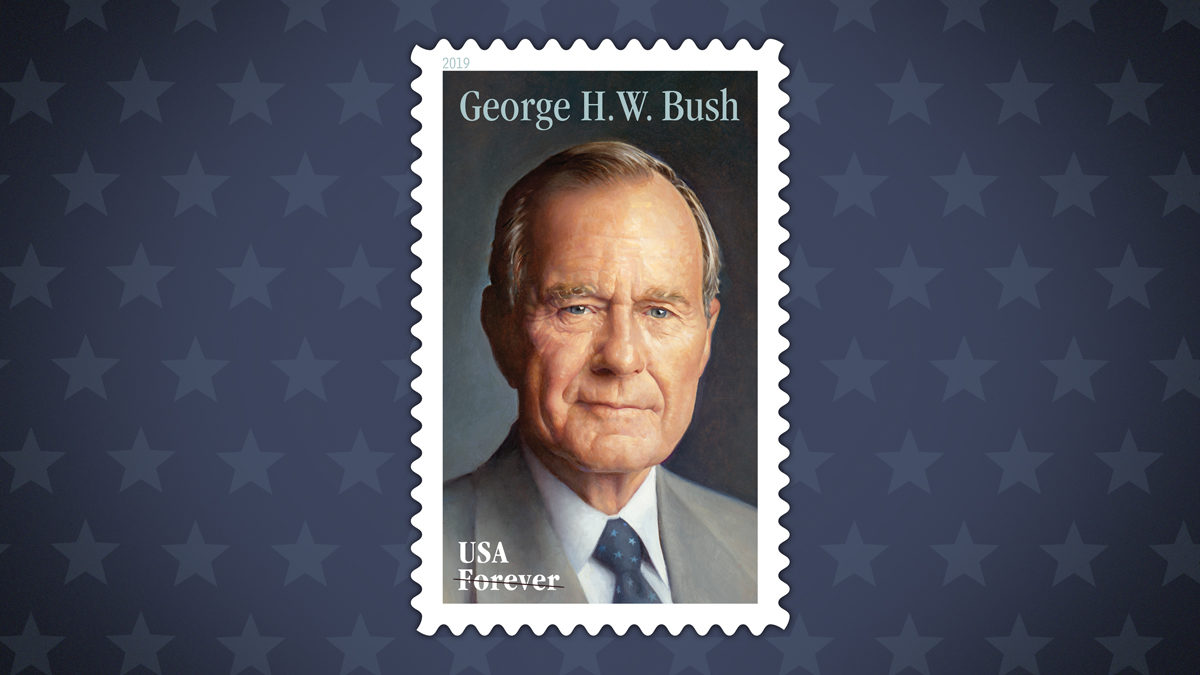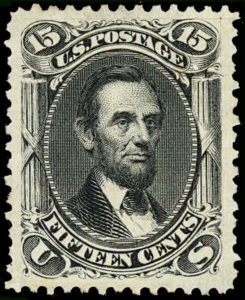
The postage stamps of a nation are a picture gallery of its glories. — Postmaster General Arthur E. Summerfield, 1957
Presidential Postage Stamps
On June 12, 2019, the U.S. Postal Service issued a Forever stamp honoring George H.W. Bush, our nation’s 41st president, who died on Nov. 30, 2018. Bush enlisted in the Navy when he turned 18 and became one of the youngest U.S. combat pilots to serve in World War II. Later, he made a career of public service. As president, he guided the United States and its allies to a peaceful end of the Cold War, and led a multinational coalition that successfully forced Iraq to withdraw from Kuwait during the Persian Gulf War. On the home front, Bush signed the Clean Air Act Amendments of 1990, which strengthened and expanded the act’s environmental protections. He also signed into law the Americans with Disabilities Act of 1990, which made it illegal to discriminate based on disability in employment, transportation, public accommodations and telecommunications. After his retirement, he continued to serve, helping raise millions of dollars for charity and disaster relief.
Bush joins a distinguished list of previous presidential honorees. Before 1900, presidential portraits predominated on postage stamps. George Washington, the most popular U.S. stamp subject of all time, has appeared on more than 300 different stamp issues, including one of the first U.S. stamp issues.
A brief history
Every deceased president has been honored on a U.S. postage stamp, but only since 1945 have presidents been consistently memorialized on stamps after their deaths.
Seven presidents died before 1847, when the first U.S. postage stamps were introduced. Of those, John Adams had the longest wait — a stamp honoring Adams was issued in 1938, 112 years after his death on July 4, 1826. Thomas Jefferson died on the same day as Adams, but appeared on a stamp just 30 years later, in 1856.
In addition to Adams, 11 other presidents were first pictured on stamps in 1938, when the Post Office Department issued the Presidential Series of stamps, honoring all the presidents from Washington to Coolidge. The other first-time honorees in that series were: John Quincy Adams, Martin Van Buren, William Henry Harrison, John Tyler, James Polk, Millard Fillmore, Franklin Pierce, James Buchanan, Andrew Johnson, Chester Arthur, and Calvin Coolidge.
The first presidents memorialized on stamps shortly after their deaths were Abraham Lincoln and James Garfield, who were both assassinated while in office. Lincoln died on April 15, 1865; a postage stamp featuring his likeness was issued a year later, in April 1866. Some people consider this to have been the first true commemorative stamp, in part because it was issued in black ink, the traditional color of mourning. James Garfield died on September 19, 1881; a 5-cent stamp with his portrait was issued about seven months later, on April 10, 1882.
Lincoln and Garfield were exceptions. The only other 19th century president honored within a decade of his death was Ulysses S. Grant, who died in 1885 and was honored on a postage stamp five years later.
In the early 1900s, the length of time between a president’s death and appearance on a postage stamp ranged from one month (Warren Harding, in 1923) to nearly 15 years (Grover Cleveland, also in 1923). This changed in 1945.
Franklin Delano Roosevelt, a popular president and passionate stamp collector, died on April 12, 1945. Over the next nine months, he was honored on a series of four stamps, the Roosevelt Memorial Series. Since that time, presidents have been consistently memorialized on postage stamps within a year or so of their death, often on the date of their birth.
USPS stamp selection guidelines state: “A memorial stamp will be issued honoring U.S. presidents after they are deceased.” The full list of current stamp selection criteria is available on USPS.com.
